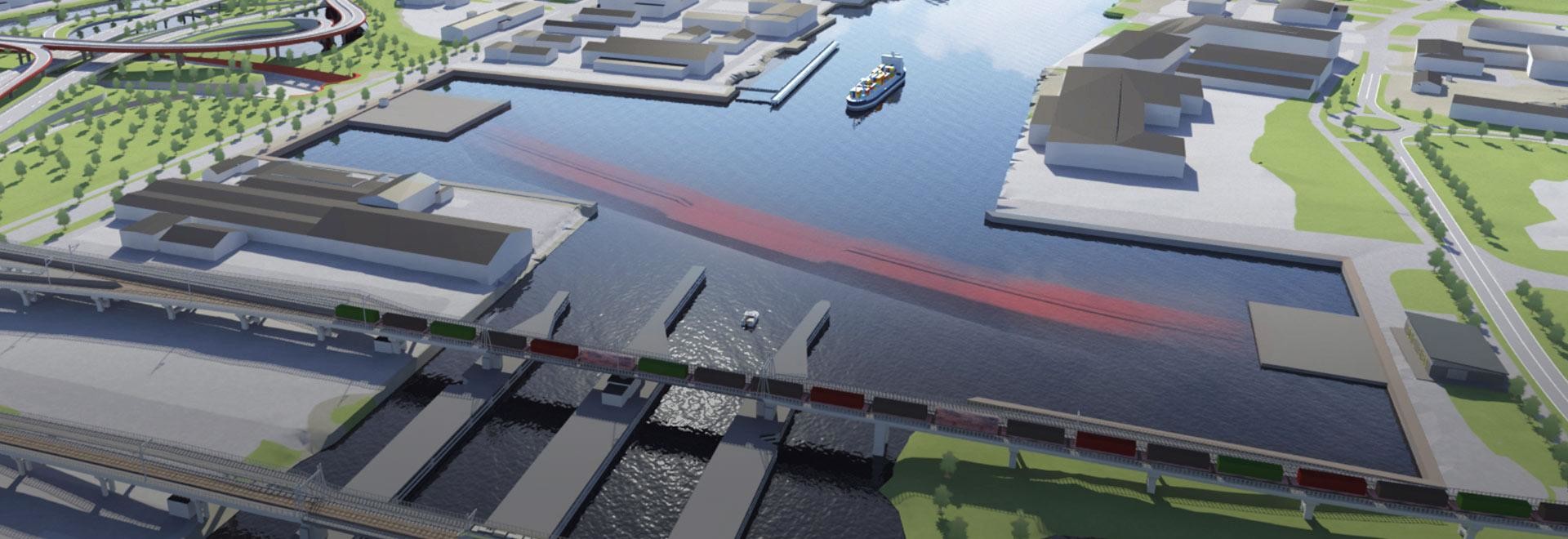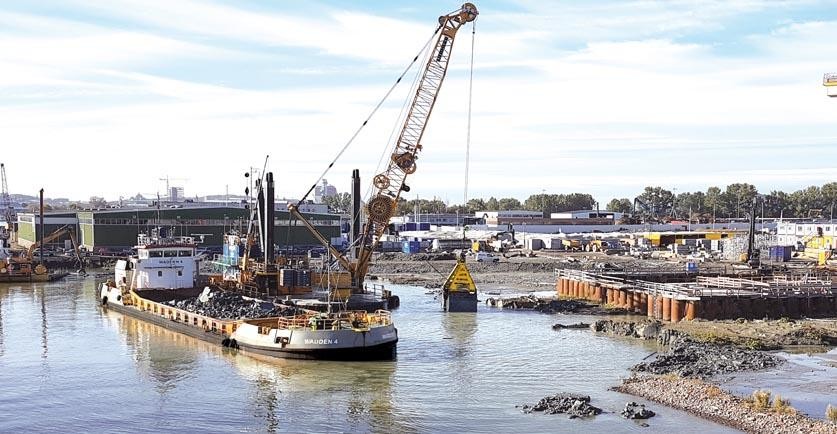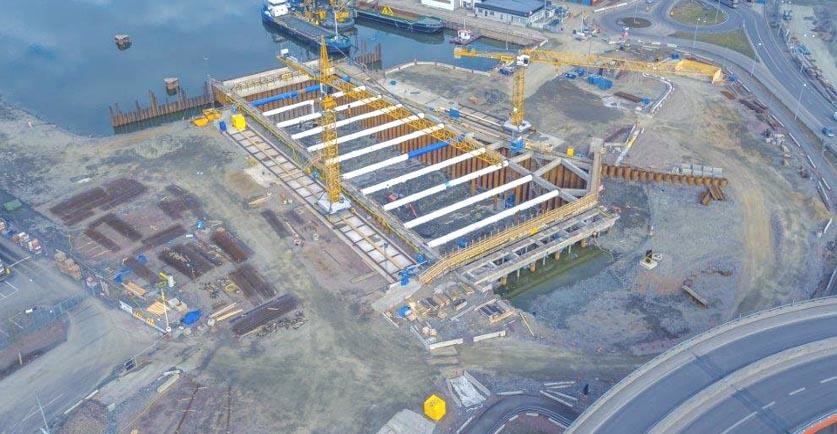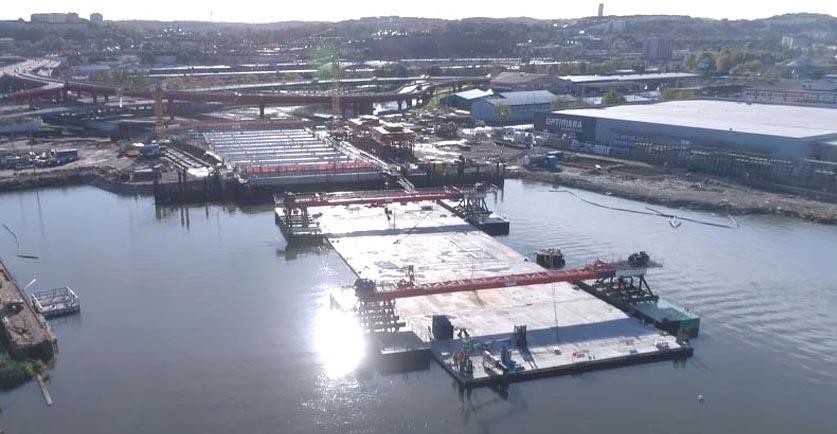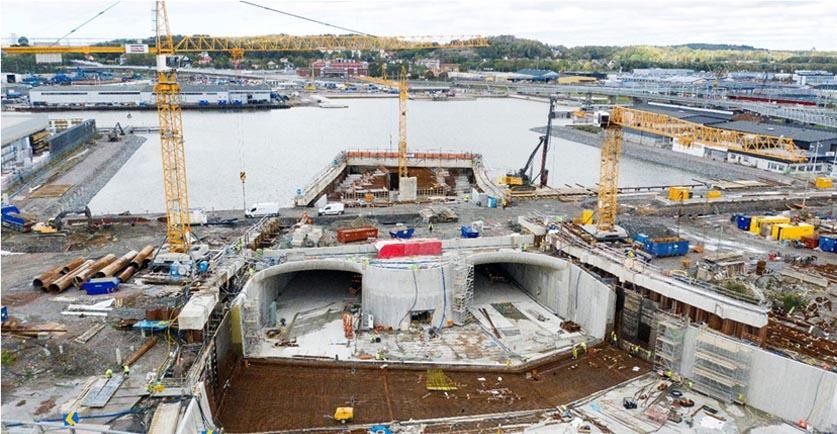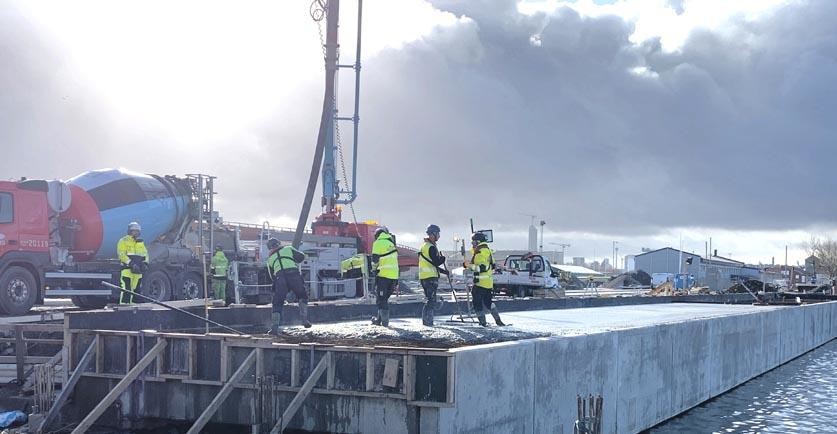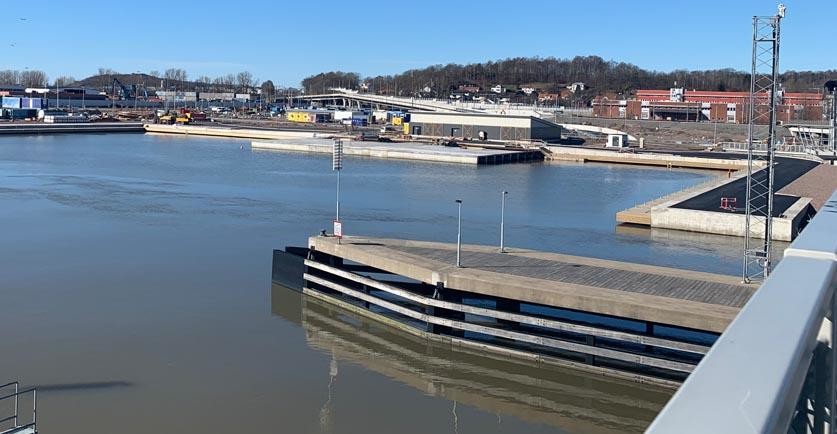Finally, in 2014, the new 500 metres long Marieholm tunnel began to be built next to the Tingstad tunnel. The goal was, in fact, two tunnel tubes with three lanes in each direction.
The multiannual contract was implemented by a consortium, in which the main partners were Terramare’s Swedish sister company, Boskalis Sweden AB, and Züblin Scandinavia AB.
Clear division of labour between partners
Project Manager Jouko Sederholm explains that the division of labour in the contract was such that Züblin was responsible for the manufacture of the tunnel elements and Terramare was responsible for dredging the tunnel channel, sand filling under the tunnel, and filling work after tunnel installation. Working under a river requires, of course, a lot of skill:
“Dredging and filling work had to be carried out in a very controlled manner, ensuring the stability of the surrounding areas. Sometimes shipping traffic on the river also had to be stopped,” says Sederholm. The contract included dredging and filling work amounting to approximately 440,000 m3.
“Submersion tunnels like this can be found in Central Europe, but they are less common in the Nordic countries. Technically, such a tunnel project is definitely one of most challenging there is.”
Excavation restrictions applied during the summer
The work was carried out with great sensitivity, because any work that clouded the waterways could not be done between November and April. The thin-layer dredging and removal of contaminated sediments (caused by, for example, industrial and shipping operations) also presented their own challenges. For the sediments, totalling 20,200 m3, it was very difficult to find a final disposal site.
“This problem was solved when we found a local waste industry operator as a partner and set up a reception point for the contaminated sediments upstream,” explains Sederholm.
River Göta gained two marinas
As a special addition, two marinas were implemented on the river during the project; some 100,000 m3 of material was excavated in connection with the contract and 700 metres of jetties constructed.
“Terramare’s work was completed in summer 2020 and the marinas were a superb finishing touch,” concludes Sederholm.
After six and a half years of construction, the Marieholm tunnel opened to traffic in December 2020. Marieholm offers a new daily link for 90,000 vehicles, and it has brought considerable relief to the city’s traffic congestion situation.

